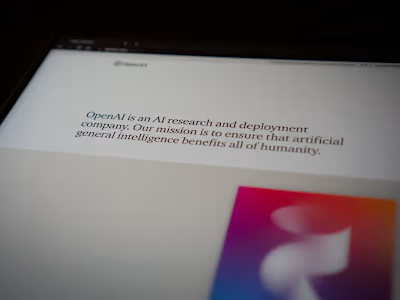Machine Learning vs. Deep Learning: Unraveling the Intricacies
The transformative potential of artificial intelligence (AI) is no longer a subject of science fiction but is rapidly becoming a tangible reality in our daily lives, from self-driving cars to personalized recommendation systems. At the heart of AI innovations are two key approaches: machine learning and deep learning. While these terms are often used interchangeably, they have significant differences that shape their capabilities and applications. This article will delve into the underlying principles of machine learning and deep learning, explore their distinguishing features, and provide a comprehensive understanding of their respective advantages and limitations.
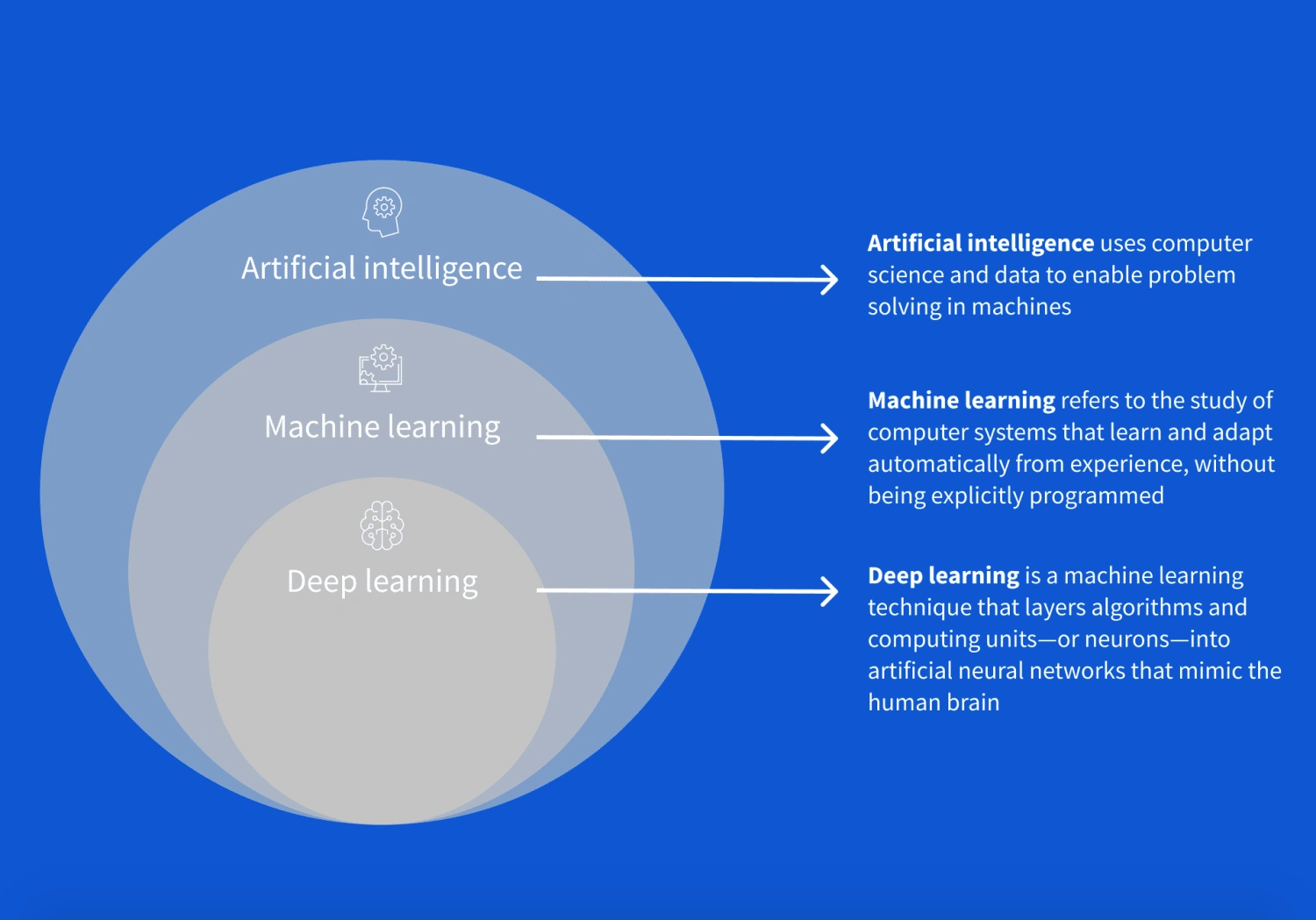
artificial intelligence vs. machine learning vs. deep learning
Machine Learning: The Foundation of Artificial Intelligence
Machine learning, a subfield of AI, revolves around the development of algorithms that enable computers to learn from data and make predictions or decisions autonomously. This approach transcends traditional rule-based programming, where explicit instructions need to be provided for every possible scenario. Instead, machine learning systems identify patterns and trends from the dataset and create a mathematical model that can generalize its learning to new, unforeseen situations.
There are several types of machine learning techniques, including supervised learning, unsupervised learning, and reinforcement learning. Supervised learning involves training algorithms with labeled datasets, where each input data point is associated with the correct output. In contrast, unsupervised learning deals with unlabelled data, which requires algorithms to identify underlying structures and correlations independently. Reinforcement learning takes a different approach, where an intelligent agent explores its environment and learns by receiving feedback in the form of rewards or penalties.
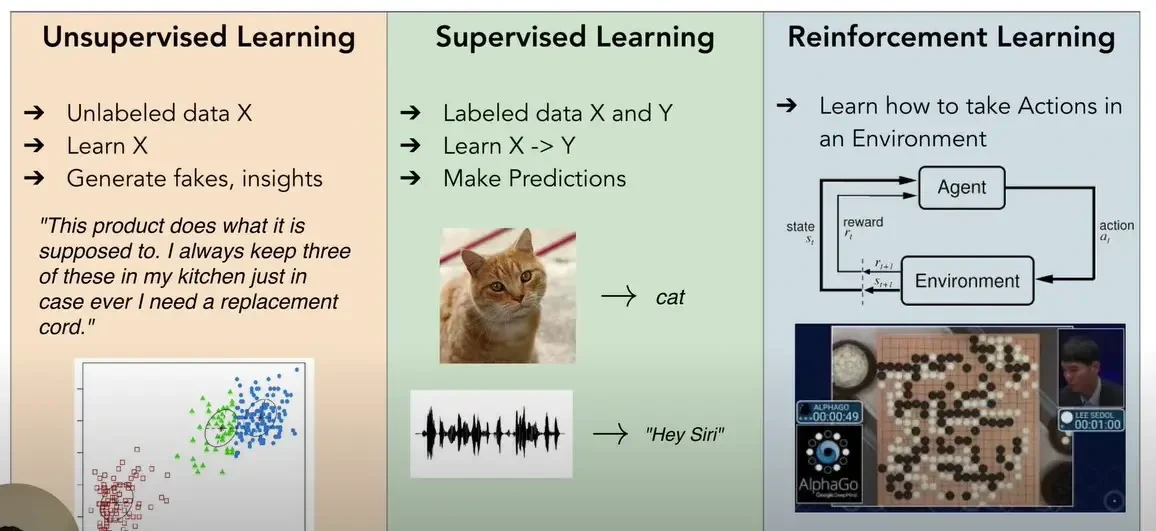
types of machine learning
Machine learning algorithms can be broadly classified into two categories: shallow learning and deep learning. Shallow learning algorithms, such as linear regression, decision trees, and support vector machines, are simpler and can only learn linear or simple non-linear patterns in the data. These algorithms are useful for solving relatively simple problems, such as spam detection, recommendation systems, and sales forecasting.
Deep Learning: The Advanced Frontier of Machine Learning
Deep learning, a more advanced subset of machine learning, seeks to mimic the human brain's structure and functionality through the implementation of artificial neural networks. These networks consist of interconnected layers of neurons that process information in a hierarchical manner. Each layer extracts increasingly complex features from the input, allowing the model to capture intricate patterns and abstractions.
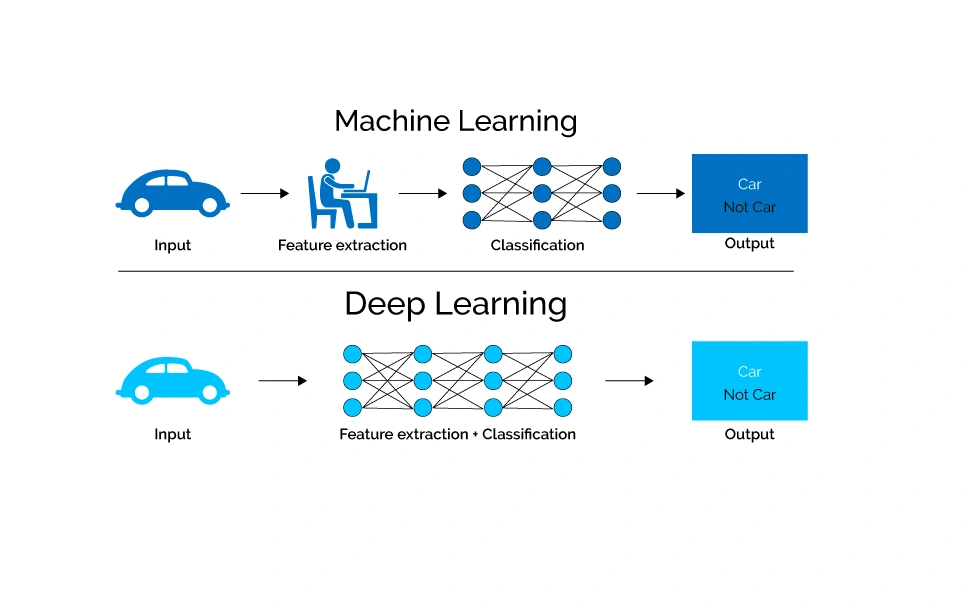
Deep Learning describes algorithms that analyze data with a logical structure similar to how a human would draw conclusions. Note that this can happen both through supervised and unsupervised learning. To achieve this, Deep Learning applications use a layered structure of algorithms called an artificial neural network (ANN). The design of such an ANN is inspired by the biological neural network of the human brain, leading to a process of learning that’s far more capable than that of standard machine learning models.
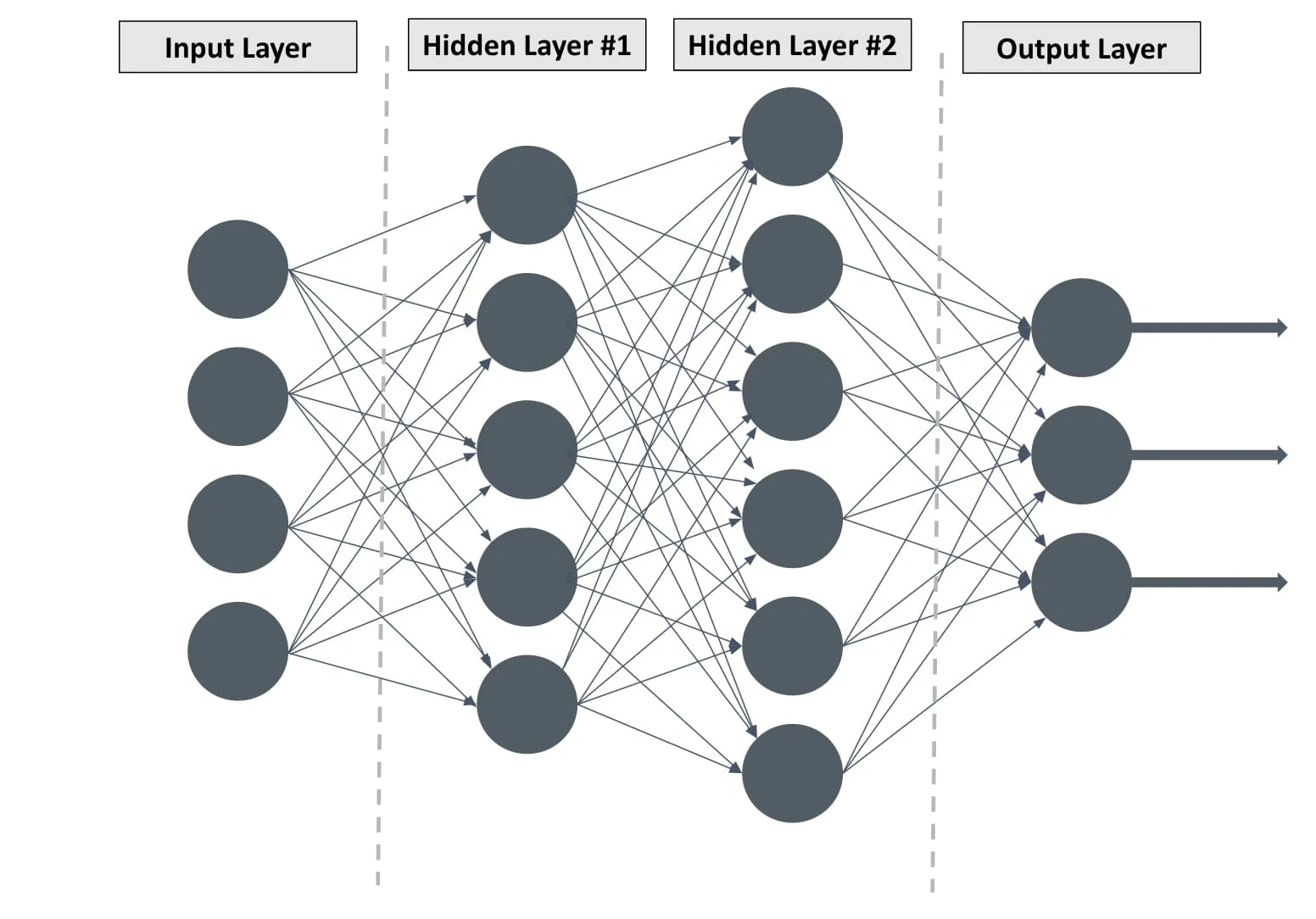
A simple ANN (artificial neural network)
Consider the example ANN in the image above. The leftmost layer is called the input layer, and the rightmost layer of the output layer. The middle layers are called hidden layers because their values aren't observable in the training set. In simple terms, hidden layers are calculated values used by the network to do its "magic". The more hidden layers a network has between the input and output layer, the deeper it is. In general, any ANN with two or more hidden layers is referred to as a deep neural network.
Today, Deep Learning is used in many fields. In automated driving, for instance, Deep Learning is used to detect objects, such as STOP signs or pedestrians. The military uses Deep Learning to identify objects from satellites, e.g. to discover safe or unsafe zones for its troops. Of course, the consumer electronics industry is full of Deep Learning, too. Home assistance devices such as Amazon Alexa, for example, rely on Deep Learning algorithms to respond to your voice and know your preferences.
Convolutional Neural Networks (CNNs) and Recurrent Neural Networks (RNNs) are two popular deep learning architectures. CNNs excel at processing grid-like data, such as images or videos, by applying convolutional filters that help identify spatial relationships between pixels. RNNs, on the other hand, are designed to handle sequential data, such as text or speech, by maintaining hidden states that encapsulate previous time-step inputs.
Differences between Machine Learning and Deep Learning
1. Complexity and Depth: One of the primary differences between machine learning and deep learning lies in their complexity and depth. While machine learning algorithms are relatively simple and shallow, deep learning algorithms involve multiple layers of processing units, allowing them to learn complex representations from large volumes of data.
2. Feature Engineering: In traditional machine learning, feature engineering plays a crucial role in model performance. This involves the manual extraction of relevant features from the data, which can be time-consuming and requires domain expertise. In contrast, deep learning algorithms automatically learn to extract relevant features from raw data, eliminating the need for manual feature engineering.
3. Data Requirements: Deep learning algorithms typically require a large amount of data to achieve optimal performance. This is because deep learning models have a significantly higher number of parameters to learn, and insufficient data can lead to overfitting. Conversely, machine learning algorithms can often achieve satisfactory results with smaller datasets.
4. Computational Resources: Deep learning models are computationally intensive, requiring powerful hardware (such as GPUs) and parallel processing for efficient training. On the other hand, machine learning algorithms can be trained on relatively modest hardware, making them more accessible for smaller-scale applications.
5. Interpretability: Machine learning models, particularly those based on shallow learning algorithms, are generally more interpretable and easier to understand than deep learning models. This is because deep learning models are often referred to as "black boxes" due to their complex internal structures and lack of transparency.
Conclusion
In conclusion, machine learning and deep learning are two distinct yet interconnected approaches to artificial intelligence. While machine learning focuses on simpler algorithms and requires manual feature engineering, deep learning harnesses the power of deep neural networks to automatically learn complex representations from raw data. Both approaches have their strengths and limitations, and the choice between them depends on the specific problem, data availability, and computational resources.
As artificial intelligence continues to progress, the boundaries between machine learning and deep learning will likely become increasingly blurred. Researchers and practitioners must remain vigilant in understanding the nuances between these approaches and continue to explore new techniques and applications to unlock their full potential.
Like this project
Posted Mar 24, 2023
A comprehensive comparison and comparative analysis of machine learning and deep learning






